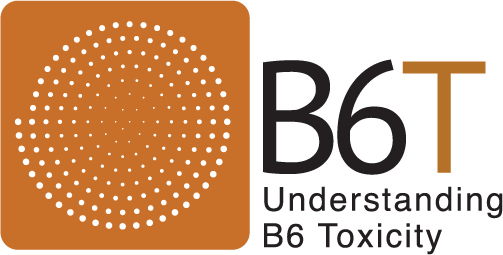We knew from the Dalton & Dalton 1985 study that vitamin B6 toxicity could be possible in a large portion of the population. We know from their 1985 study that 40% of those taking vitamin B6 for premenstrual syndrome and had plasma levels above normal showed signs of vitamin B6 toxicity. In their 1987 follow-up study, Dalton and Dalton showed that toxicity was possible with B6 supplementation as low as 50 mg.
In a follow-up newspaper article debating the toxicity of vitamin B6, Arnold Beckett with the Vitamin B6 Scientific Task Group stated, “The unrepresentative Dalton study has been deemed worthless by the medical and scientific community. If Dalton’s findings were even partially valid there would be a veritable epidemic of vitamin B6 neurotoxicity”. THERE WOULD BE A VERITABLE EPIDEMIC OF VITAMIN B6 NEUROTOXICITY.
We are the first organization attempting to gather the research of all that is B6 toxicity. We can easily see that Dalton and Dalton’s research is right. Does this mean there is a veritable epidemic of vitamin B6 toxicity?
Matt Critcher and Agata Sobczynaka-Malefora’s 2015 article, “Vitamin B6: Low and Very High Concentrations in Hospital Patients also referred to as the London Hospital Study gives a glimpse into the possibility of a B6 toxicity epidemic. In a phone conversation with Dr. Sobczynaka-Malefora, she revealed that the study was looking for hospital patients with symptoms of low vitamin B6. What they found was of the 269 hospital patients only four patients (2%) had B6 that was considered below the reference range (B6 deficiency) while 103 patients (38%) had B6 that was considered above the reference range (B6 toxicity). In a study that was looking for deficiency in hospital patients, they found 38% of their subjects had toxic levels of B6 in their blood.
Does this mean we have an epidemic? The London Hospital Study opened our eyes to the amount of HOSPITALIZED people with a high B6 blood level. We know through the pie chart that 10% of this study had sensory neuropathy. Since autonomic or motor neuropathy was not assessed, we can only assume a portion of the high vitamin B6 subjects had symptoms other than sensory neuropathy. The research needed to answer the epidemic question is a controlled study that measures the B6 level of ER or hospital patients that have symptoms of sensory, autonomic or motor neuropathy. We need to research that shows X amount (30%? 40%? 50%?) of a said population have high B6 blood work with sensory, autonomic and/or motor neuropathy. Please consider contributing to our B6 toxicity research fund so that this as well as other research can be made possible.
Any unlinked research can be found in our Index of Sources.
